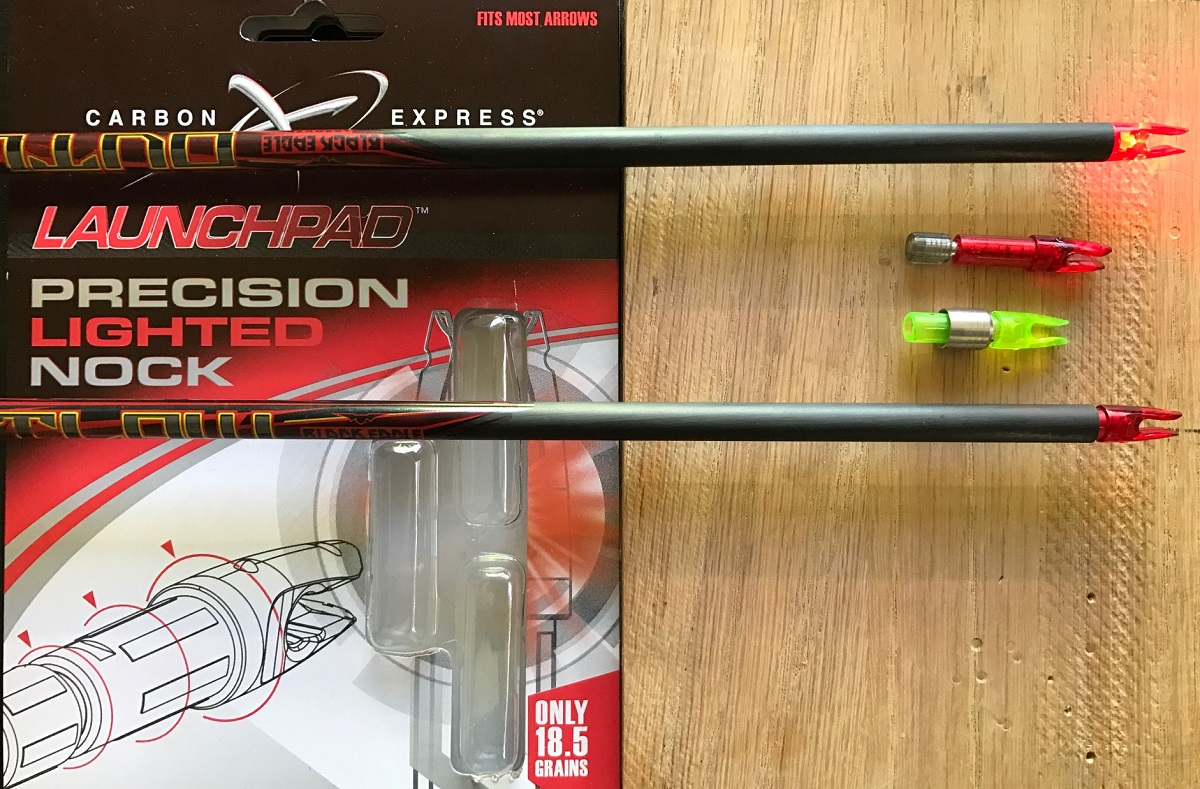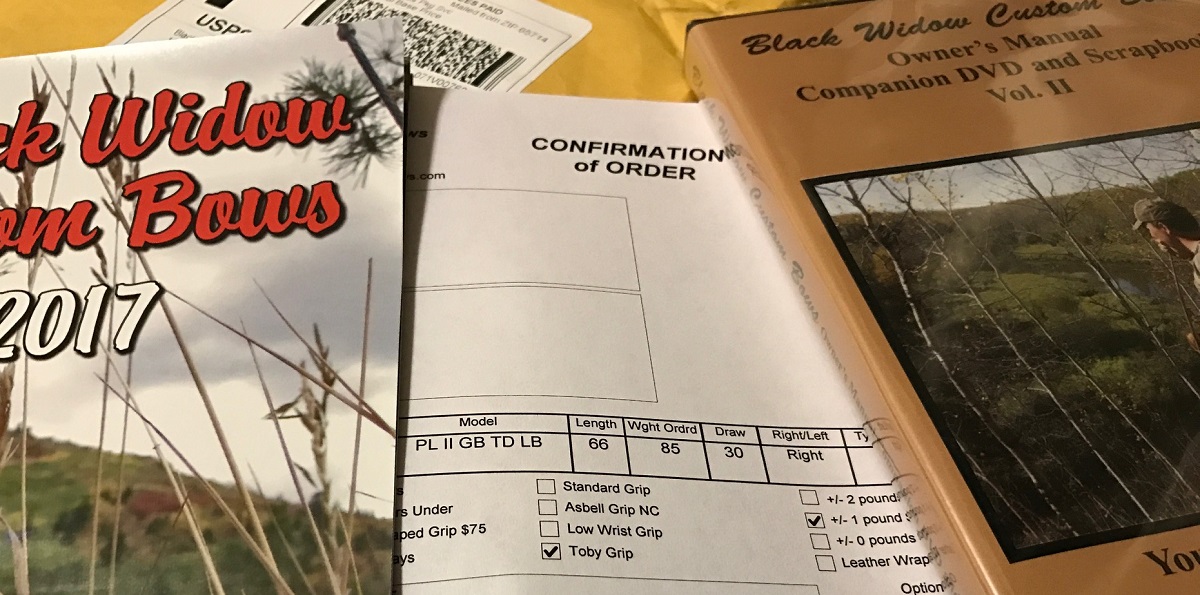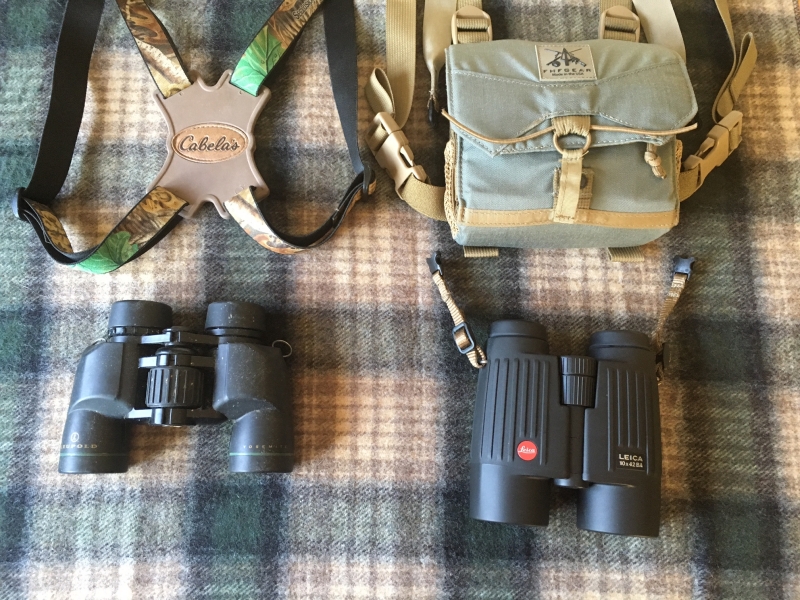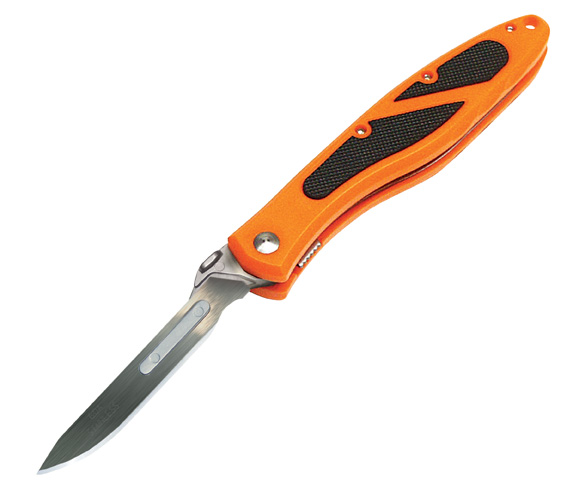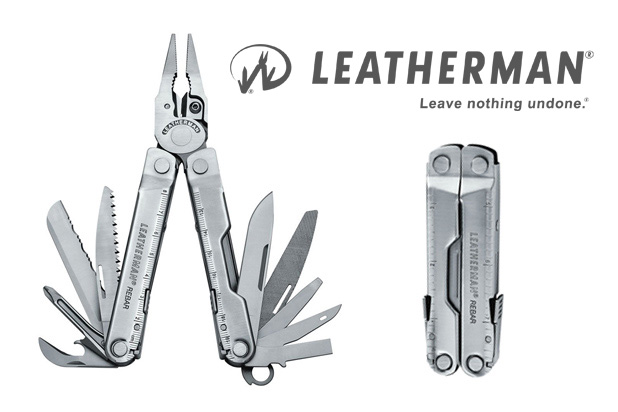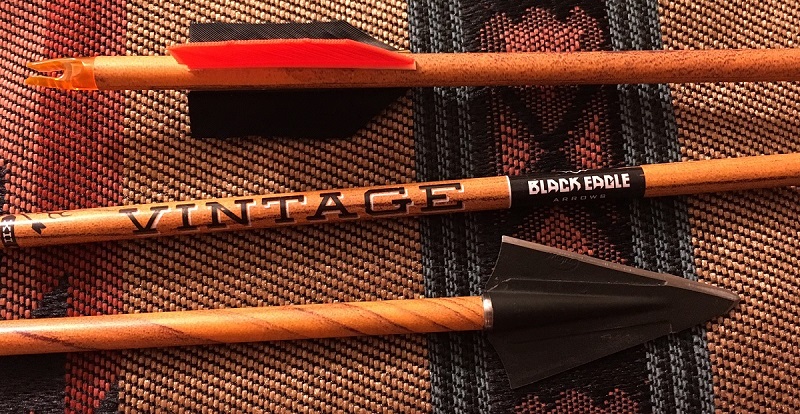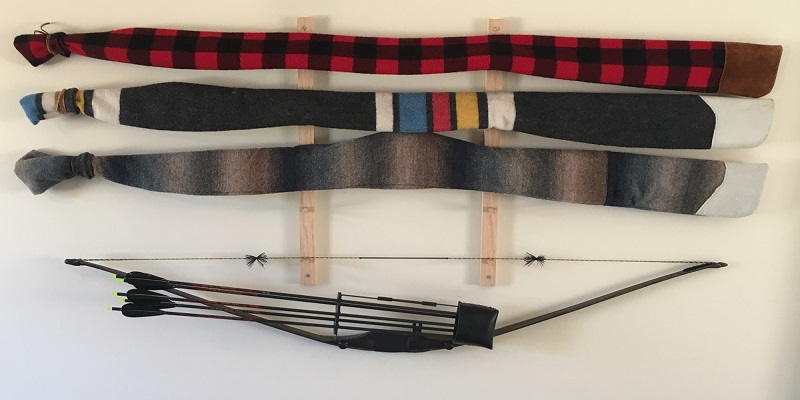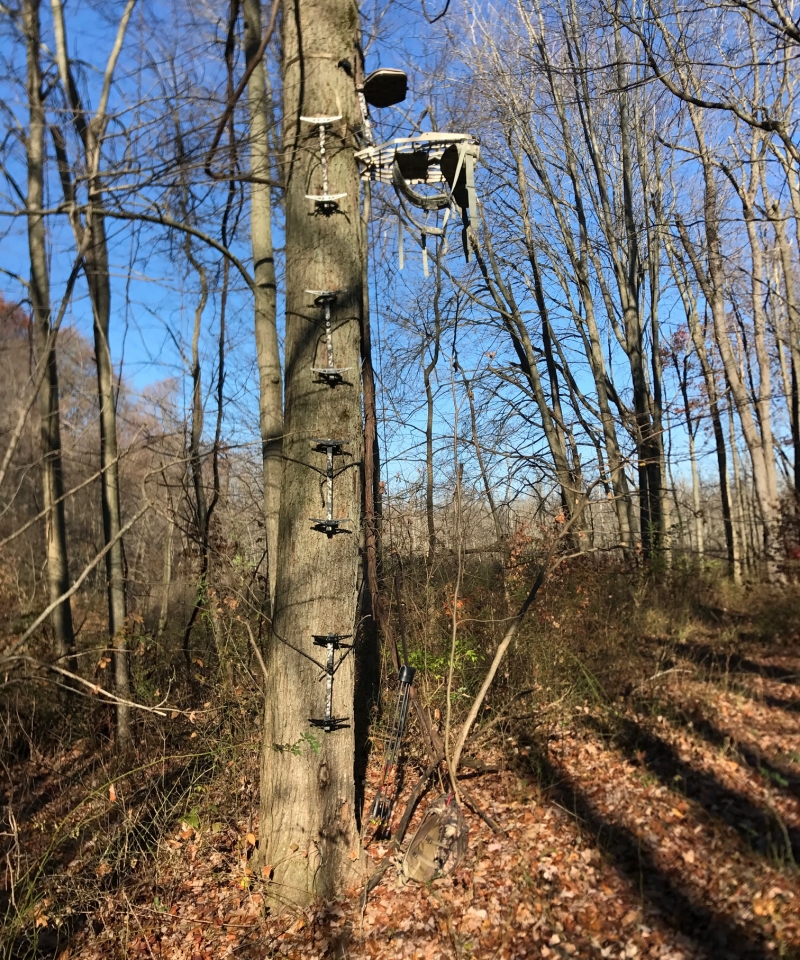
*** UPDATE*** I recently found out that my Muddy Pro Sticks were recalled years ago. I tried to get in touch with Muddy via their website to get replacement parts to make my sticks safe, but I never received any replies. Although I was perfectly happy with the idea of buying the parts and paying shipping to keep my beloved sticks, it seems they must be terribly busy with other things. Now I have Lone Wolf climbing sticks, but I will leave the rest of the post as it originally read.
I have used maybe a few dozen treestands at this point, and I’ve owned 5 different hang on models and 7 different pairs of sticks to use with them. While I know lots of guys who’ve used many more over many more years, one good thing is that all of my experience at this point has been in the last 6 years.
When it came time for me to invest I thought long and hard about the different styles, and I immediately eliminated ladder stands due to my mobility requirements. I like the idea of a climber and have many friends that love them, but you always end up with the “hunting the tree instead of hunting the spot” problem. While a hang on system maybe have more parts, you can get into some crazy trees and sometimes it’s those crazy trees that are where the animals are going to pass. I decided that a hang on stand would be right for me.
I had many friends encourage me to invest in a Lone Wolf, and I ignored them and bought a bunch of cheaper stands instead. In total I bought 4 stands that together cost much more than a Lone Wolf, and then I bought the Lone Wolf and gave away all the other ones. I purchased the Lone Wolf Alpha 2 at Cabelas using points. While I love this stand, had I needed to pay cash out of my wallet I would have bought a XOP Air Raid instead.
While I think my stand was amazing coming out of the package, I was inspired by Jason at the TBWPODCAST to do a little better. I wrote up how I used rubber, zip ties, and military surplus gear to drastically improve how quiet and comfortable my stand is to use. Read about it HERE if you missed it before. The final modification I made was to remove the beloved “batwing” and go with an EZ-Hang strap. Look at my zip tie and Yak Grips in the Sticktalk article, those are really slick!
With my treestand 100% awesome, now I needed sticks to get me up there. Muddy had just released their new Pro Sticks and I was intrigued. While I much prefer three long sticks to 4 short ones, these had a few HUGE advantages over the LW sticks. First the rope and cam buckle system is absolutely perfect. It is actually impossible to make metal to metal noise with one of these sticks. Second, every step is a double step so you don’t have to swap your step from side to side. As a nice bonus they are geared together so if you pull one side down it brings the other side along with it.
Assuming I’d hang my first stick at waist or chest height, I could set my second stick across the top of the first. That left me two sticks to figure out. I ended up putting two loops on each side of my harness at my waist, but out of the way of my lineman’s belt loops. I also added 550 cord loops to two of my sticks, now I can click them in to my waist with rubber covered mini carabiners. Other than the loops on two of them, I have not modified them in any structural way. I did wrap them with Howie’s Hockey Tape on a slow winter weekend last year, but functionally they are just like they came from the factory.
So aside from the hardware, there is one trick that makes all of this work especially good for me. I walk to my tree with my stand on my back, and my backpack hanging on it. I have my bow in my right hand, and my sticks in my left. At the bottom of the tree I always do the exact same thing:
- I put everything on the ground.
- I put on my harness, I put my EZ-Hang strap in my right cargo pocket, and my second strap in my left cargo pocket.
- I take my lineman’s belt and attach it to my harness.
- I have a rope permanently attached to the top handle of my backpack, I fish it all out and make sure its tangle free.
- There is a loop 6′ up from the backpack handle, I secure the top limb of my longbow to that.
- The every end of the 30′ rope has a loop on it, I attach it to my right side mini carabiner.
- I put the stand on my back like a backpack, without using the waist belt.
- I put the first stick on the tree, balance the second stick on the first, then put my other two sticks on my sides with the mini carabiners.
- I climb up on the first step and wrap my lineman’s belt around the tree and adjust the prussic knot to fit.
- Put on the second stick, climb up to the bottom step of it.
- Pull the third stick off my right side, mount it, climb onto it’s bottom step.
- Pull the fourth stick off my left side, mount it, climb up to it’s bottom step.
- Take EZ-Hang strap out of my right cargo pocket, put it chest high and cinch it up.
- Get a really good check on the lineman’s belt, loosen up the shoulder straps, and hang the stand on the EZ-Hang.
- Make all adjustments for the platform angle, etc.
- Install the second strap on the bottom button, cinch it up tight, double check platform level, try to twist sideways, etc.
- Take rope going to the backpack and longbow off the mini carabiner, put it on the top (unused) “button” on the stand.
- From top step, install tree tether as high up as I can reach, click the strap from my back onto it.
- With seat up, step down from the top step of the fourth stick onto the platform.
- Give it a one legged kick/push/and apply weight while keeping 3 other points of contact.
- Move second foot over, feel it out, remove lineman’s belt.
- Drag up bow, put on seat.
- Put backpack’s handle on the top step of the top stick. Secure excess rope.
- Sit down, put an arrow on the string, put the lower limb in my boot, and hunt!
OK, that looks like a lot of steps but as long as you prepare at the base of the tree for the steps you’re about to perform, it just flows from one thing to the next.
One thing I realized in typing this up, instead of putting the loop on the string between the backpack and the treestand, I want a 6′ rope on the bottom of the backpack to go to the bow. This way I can drag up the heavy backpack and hang it then bring up my bow last (without a second haul rope.) It is good to maintain a “beginners mind”!
